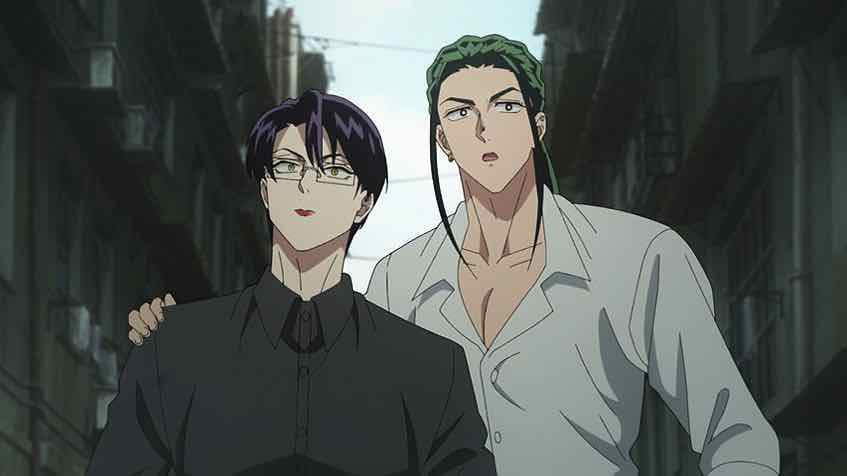 One’s assessment of Kowloon Generic Romance may come down to how you define “success” (pun intended). I find the glass to be well over half-full, but it seems a lot of manga readers strongly disagree. I get that – I’ve been there. Adapting an 11 volume (and counting – it’s still ongoing) manga into 13 anime episodes is an enterprise fraught with peril. In truth, nothing the anime did was ever going to satisfy most fans of the original. But what was the alternative, realistically? No anime at all. It’s a tradeoff I’m more than happy to take, myself.
One’s assessment of Kowloon Generic Romance may come down to how you define “success” (pun intended). I find the glass to be well over half-full, but it seems a lot of manga readers strongly disagree. I get that – I’ve been there. Adapting an 11 volume (and counting – it’s still ongoing) manga into 13 anime episodes is an enterprise fraught with peril. In truth, nothing the anime did was ever going to satisfy most fans of the original. But what was the alternative, realistically? No anime at all. It’s a tradeoff I’m more than happy to take, myself.
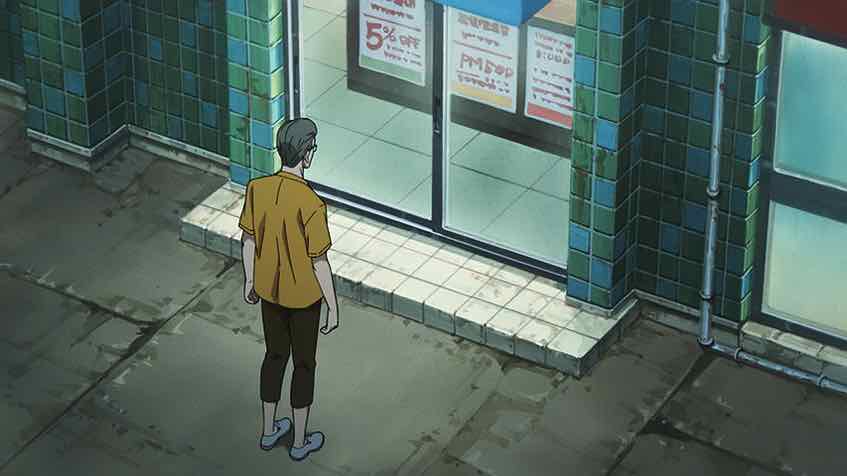 For a series that was essentially a mystery (despite sci-fi and romance themes being dominant), one has to address the ending head-on. That’s difficult in the sense that not only have I not read the manga but as of yet no one knows how this ending will materially differ from Mayuzuki Jun’s. The tone struck me as just right – bittersweet would be the right descriptor. There was a strong sense of what was being lost, which was something close to the hearts of a great many people. This series is as much a love story about a place as about two people.
For a series that was essentially a mystery (despite sci-fi and romance themes being dominant), one has to address the ending head-on. That’s difficult in the sense that not only have I not read the manga but as of yet no one knows how this ending will materially differ from Mayuzuki Jun’s. The tone struck me as just right – bittersweet would be the right descriptor. There was a strong sense of what was being lost, which was something close to the hearts of a great many people. This series is as much a love story about a place as about two people.
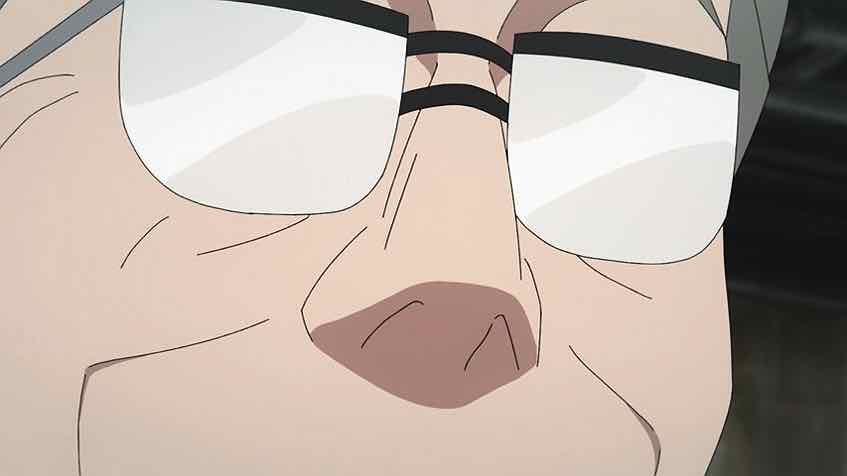 What was missing was any concrete explanation for how all this happened in the first place. To be frank that was kind of what I expected – the mechanics of it were never really the point. Not everyone will happily embrace that, to be sure. That this was all a product of Hajime’s memories – and regret – was never really in doubt and hasn’t been for a long time. But how did it actually happen? Beats me. And him, too – Kudou-san has no idea in the end. He walked in on Kujirai-B, dead on her balcony, the day after he proposed to her. And somehow, the depth of his guilt over that caused this entire city and everyone in it to reappear.
What was missing was any concrete explanation for how all this happened in the first place. To be frank that was kind of what I expected – the mechanics of it were never really the point. Not everyone will happily embrace that, to be sure. That this was all a product of Hajime’s memories – and regret – was never really in doubt and hasn’t been for a long time. But how did it actually happen? Beats me. And him, too – Kudou-san has no idea in the end. He walked in on Kujirai-B, dead on her balcony, the day after he proposed to her. And somehow, the depth of his guilt over that caused this entire city and everyone in it to reappear.
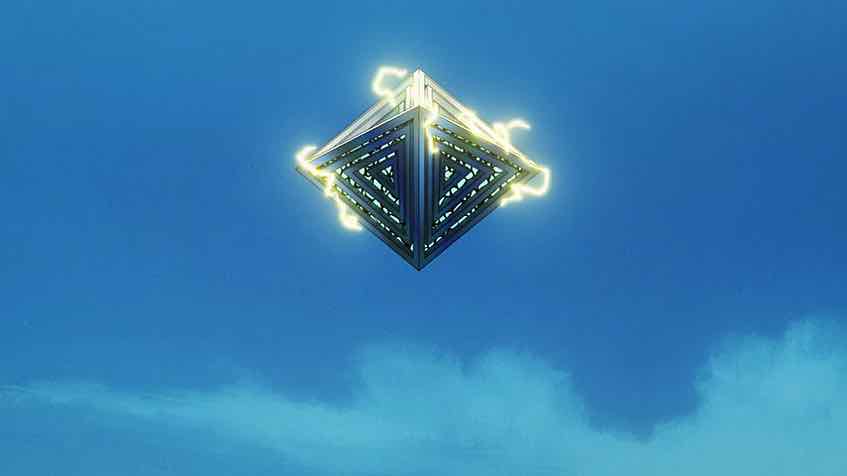 Another thing we don’t know is why Reiko – spoiler – is able to leave it behind in the end. The explanations we do get are more poetic than practical, which is exactly what I would expect from Mayuzuki. Reiko is okay with whatever happens because she’s making this choice herself, not having it made for her. That, for her, confirms her identity as a person, an individual. Not a fragment of someone’s memories or a computer program, but a person. In point of fact things look very grim for Reiko as Hajime’s existential breakdown causes Kowloon to come apart at the seams. But Success the goldfish (voiced by Yoshioka Rio, who plays Reiko in the live-action film – the irony is strong on both sides of the fourth wall there) leads her to Hajime.
Another thing we don’t know is why Reiko – spoiler – is able to leave it behind in the end. The explanations we do get are more poetic than practical, which is exactly what I would expect from Mayuzuki. Reiko is okay with whatever happens because she’s making this choice herself, not having it made for her. That, for her, confirms her identity as a person, an individual. Not a fragment of someone’s memories or a computer program, but a person. In point of fact things look very grim for Reiko as Hajime’s existential breakdown causes Kowloon to come apart at the seams. But Success the goldfish (voiced by Yoshioka Rio, who plays Reiko in the live-action film – the irony is strong on both sides of the fourth wall there) leads her to Hajime.
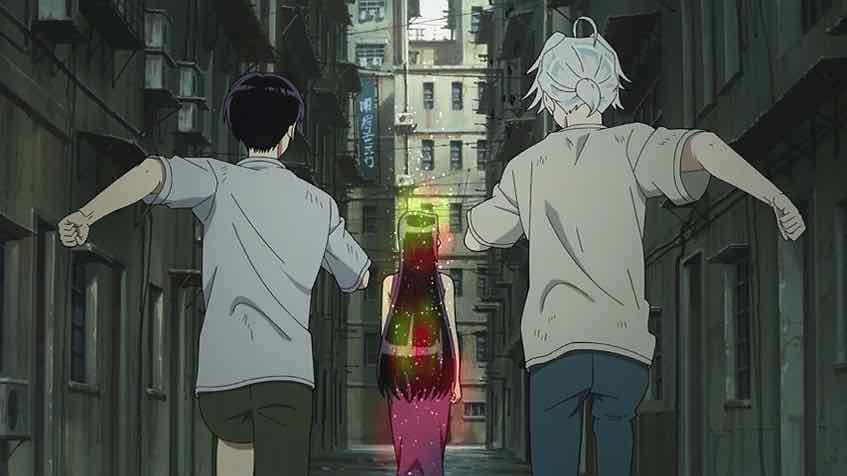 From what we learn of Kujirai-B, I can only conclude in the end that she was a very messed-up person. She loved summer – it was her ideal. Kudou’s proposal was a kind of a karmic shock to her, it seems. And apparently she bet her life on the results of taking Hebinuma’s hallucinogenic cold medicine – if she lives, she marries him. That’s a very odd thing to do, for starters. And indescribably cruel to Hajime, who was obviously scarred deeply by it. As to why Reiko is so different again, the explanation comes down to the poetical – Kudou realized that in the end he didn’t really know Kujirai-B at all.
From what we learn of Kujirai-B, I can only conclude in the end that she was a very messed-up person. She loved summer – it was her ideal. Kudou’s proposal was a kind of a karmic shock to her, it seems. And apparently she bet her life on the results of taking Hebinuma’s hallucinogenic cold medicine – if she lives, she marries him. That’s a very odd thing to do, for starters. And indescribably cruel to Hajime, who was obviously scarred deeply by it. As to why Reiko is so different again, the explanation comes down to the poetical – Kudou realized that in the end he didn’t really know Kujirai-B at all.
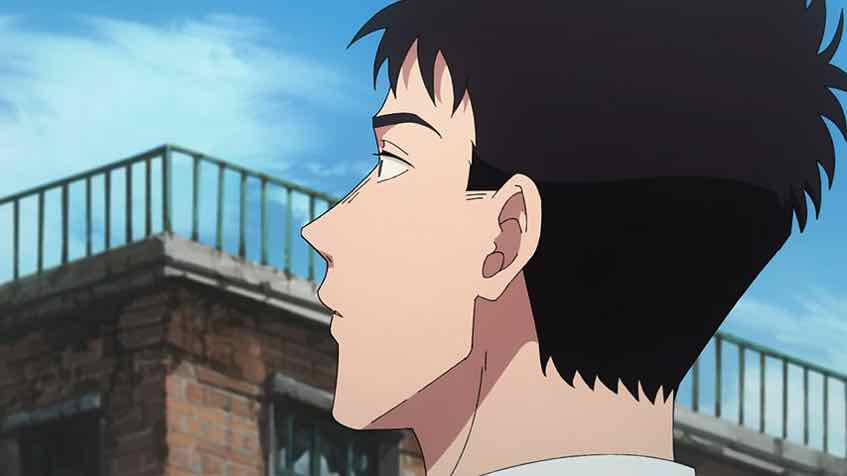 And then, Hajime himself. The reason we’re all here. He must face himself, appropriately. In the final analysis the lesson for him is the same as for the others – confront your past, accept your flaws, and move on. That it means the end of this Kowloon isn’t strictly relevant – he has no other way forward. That means letting himself off the hook for what happened to Kujirai-B. It also means letting Reiko walk away as her own person, someone who doesn’t belong to him. Not forever, but for now. Neither of them has any idea if she’ll even exist, never mind if they’ll see each other again. But it’s the only option he has.
And then, Hajime himself. The reason we’re all here. He must face himself, appropriately. In the final analysis the lesson for him is the same as for the others – confront your past, accept your flaws, and move on. That it means the end of this Kowloon isn’t strictly relevant – he has no other way forward. That means letting himself off the hook for what happened to Kujirai-B. It also means letting Reiko walk away as her own person, someone who doesn’t belong to him. Not forever, but for now. Neither of them has any idea if she’ll even exist, never mind if they’ll see each other again. But it’s the only option he has.
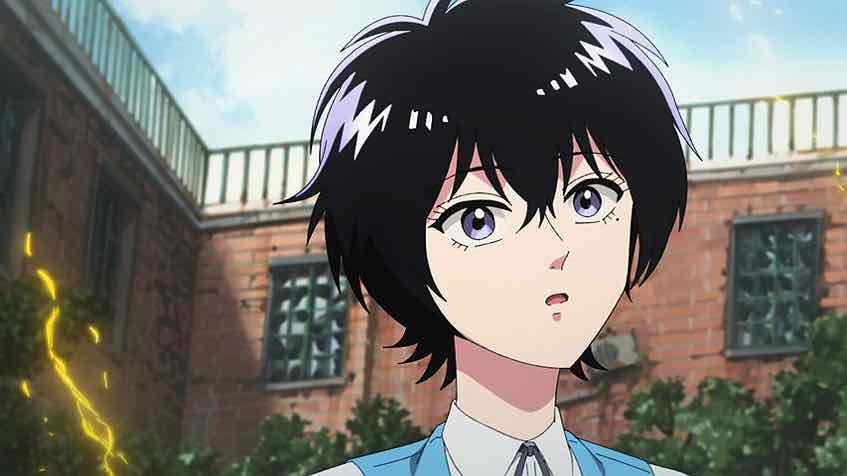 Again, I have no more idea why Reiko was able to leave this Kowloon than why it existed in the first place. But two years down the line, Hajime finds her – just how long he’s been looking, who knows. Their ending as a couple is open-ended, no question. But the grounding exists now for them to give it a go, where it didn’t before. He’s let himself off the hook, she’s embraced her right to exist for her own sake. Everyone else’s arc was or less concluded last week, clearing the way for this turn of events.
Again, I have no more idea why Reiko was able to leave this Kowloon than why it existed in the first place. But two years down the line, Hajime finds her – just how long he’s been looking, who knows. Their ending as a couple is open-ended, no question. But the grounding exists now for them to give it a go, where it didn’t before. He’s let himself off the hook, she’s embraced her right to exist for her own sake. Everyone else’s arc was or less concluded last week, clearing the way for this turn of events.
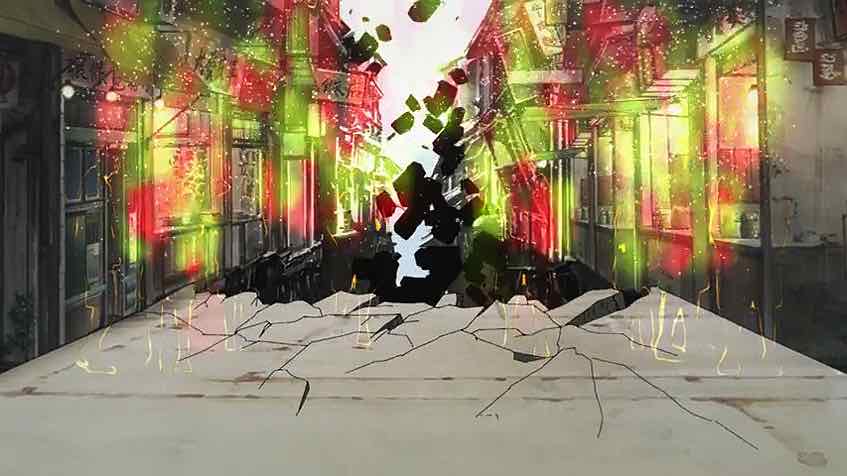 As for Kowloon, it’s certainly a character in its own right. It’s a unique chapter in human history, a place unlike any other that’s ever existed. It’s been firing the imaginations of writers almost since it came into existence, not least manga and anime creators. That Mayuzuki-sensei gave us a romanticizes portrayal of it is undeniable. The real Kowloon was a dirty, dangerous hotbed of abysmal sanitation and organized crime. But it was also a place many residents, it seemed, truly loved – with its own culture and fierce sense of pride. I would ague that a romanticized Kowloon is totally appropriate, given the nature of its existence in the story.It’s gone forever now, apart from fading memories existing only in the imaginations of people like Maayuzuki and the mind’s eye of those of us who consume their work.
As for Kowloon, it’s certainly a character in its own right. It’s a unique chapter in human history, a place unlike any other that’s ever existed. It’s been firing the imaginations of writers almost since it came into existence, not least manga and anime creators. That Mayuzuki-sensei gave us a romanticizes portrayal of it is undeniable. The real Kowloon was a dirty, dangerous hotbed of abysmal sanitation and organized crime. But it was also a place many residents, it seemed, truly loved – with its own culture and fierce sense of pride. I would ague that a romanticized Kowloon is totally appropriate, given the nature of its existence in the story.It’s gone forever now, apart from fading memories existing only in the imaginations of people like Maayuzuki and the mind’s eye of those of us who consume their work.
 I guess what one takes away from Kowloon Generic Romance boils down to what they bring to it, much like the Kowloon it depicts. Anime is an imperfect medium to say the least, and Mayuzuki Jun has received two imperfect (and incomplete) adaptations of her series. But both are also wonderful pieces of work that do an admirable job of capturing her unique vision and aesthetic. I think far more is gained from their existence than is lost, and one can muse on what could have been while still wholeheartedly appreciating what is.
I guess what one takes away from Kowloon Generic Romance boils down to what they bring to it, much like the Kowloon it depicts. Anime is an imperfect medium to say the least, and Mayuzuki Jun has received two imperfect (and incomplete) adaptations of her series. But both are also wonderful pieces of work that do an admirable job of capturing her unique vision and aesthetic. I think far more is gained from their existence than is lost, and one can muse on what could have been while still wholeheartedly appreciating what is.


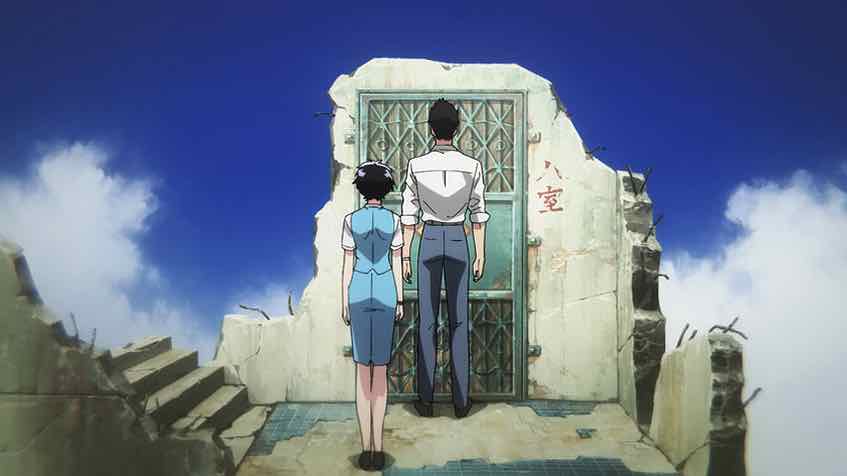


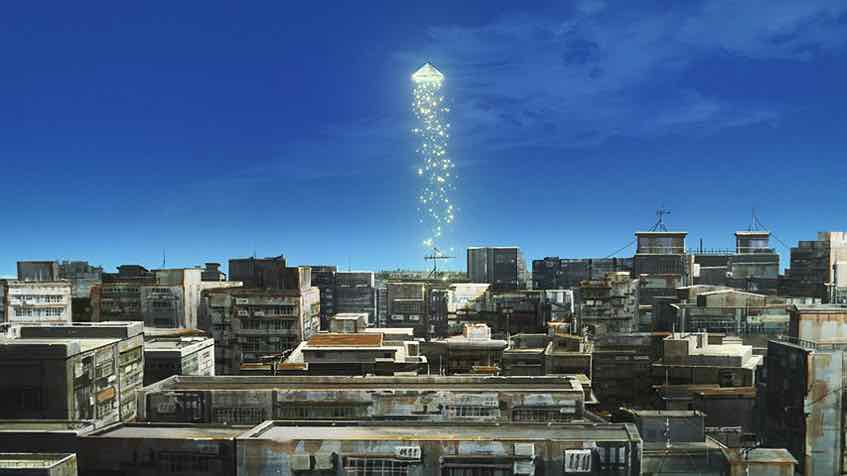

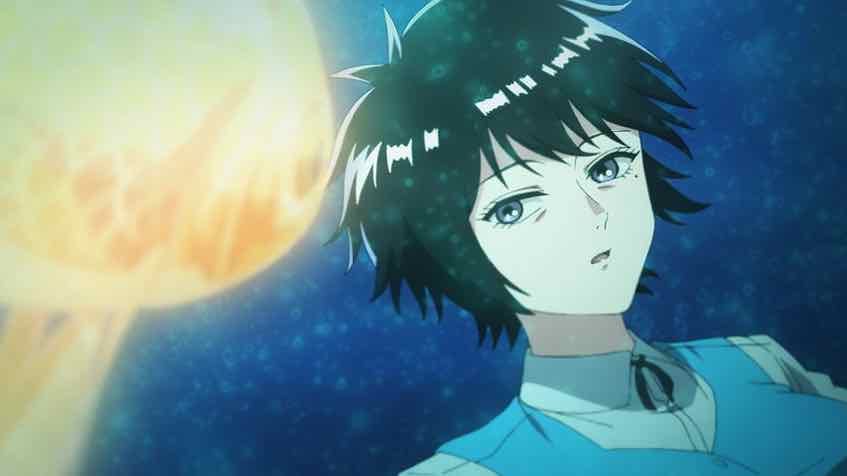
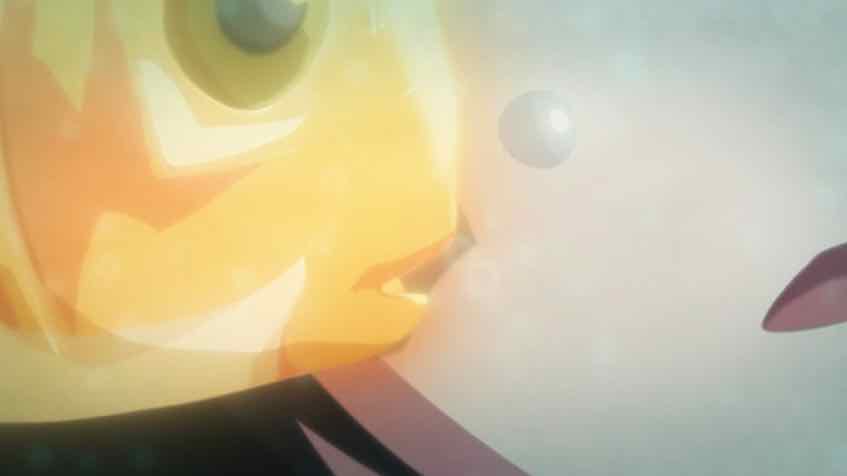
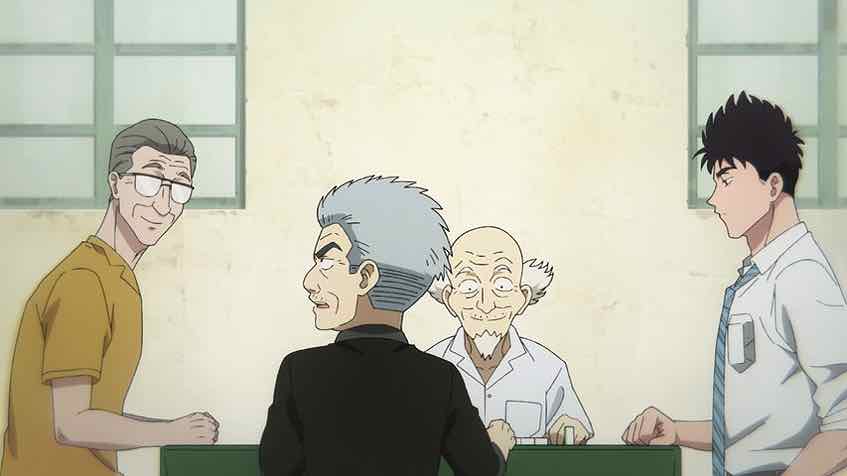
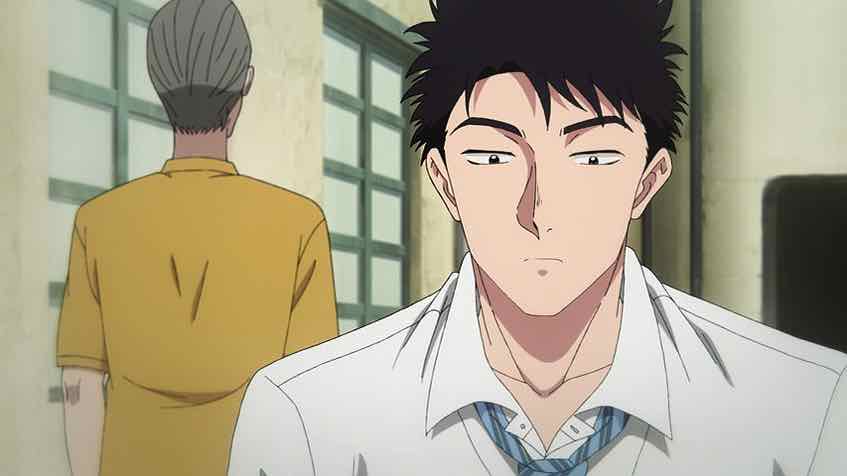
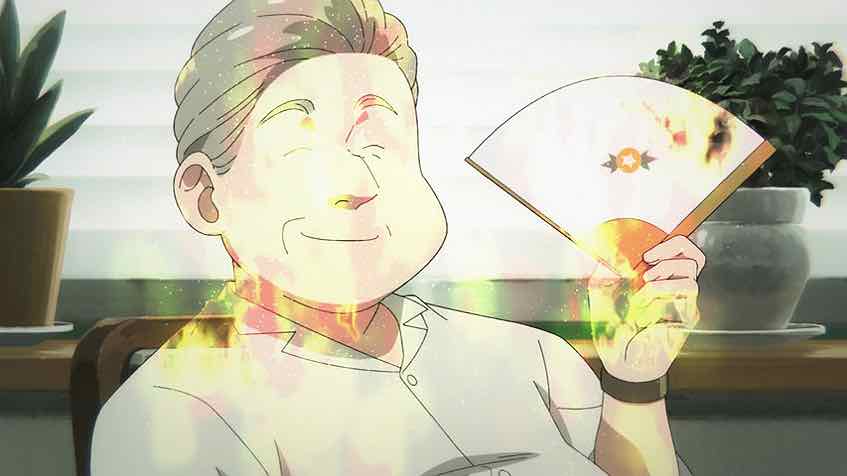
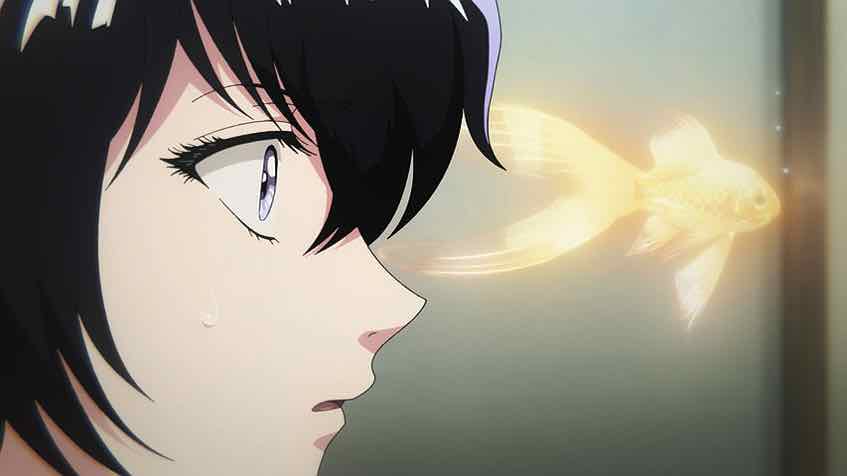

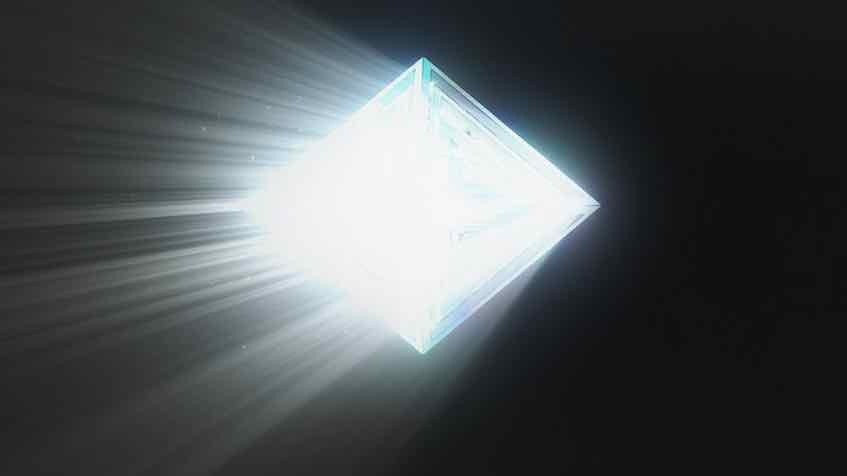
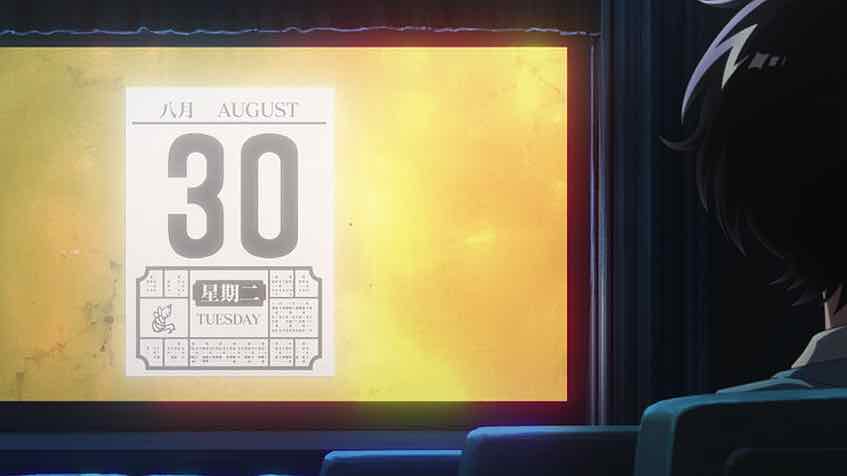
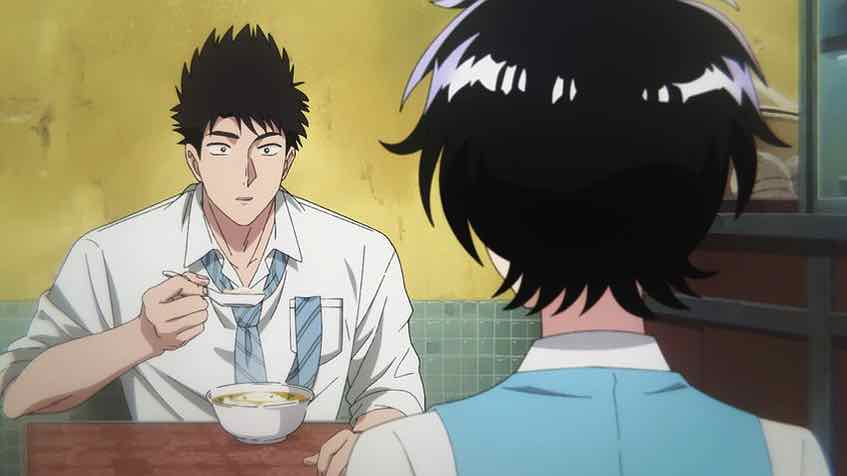



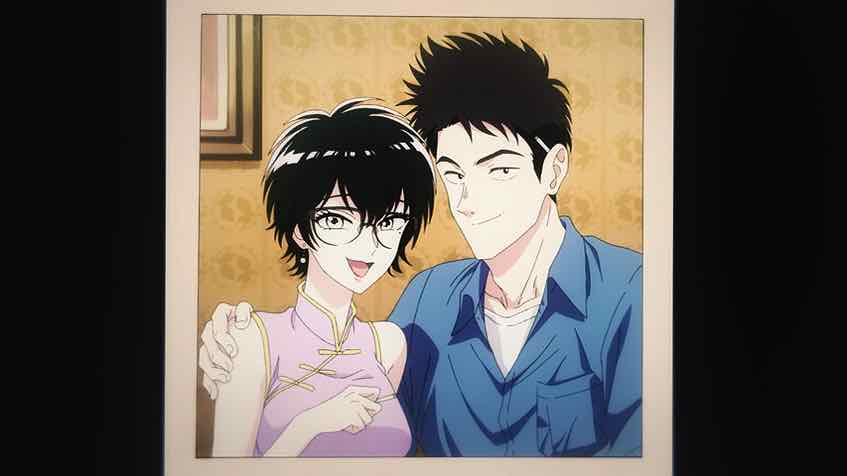


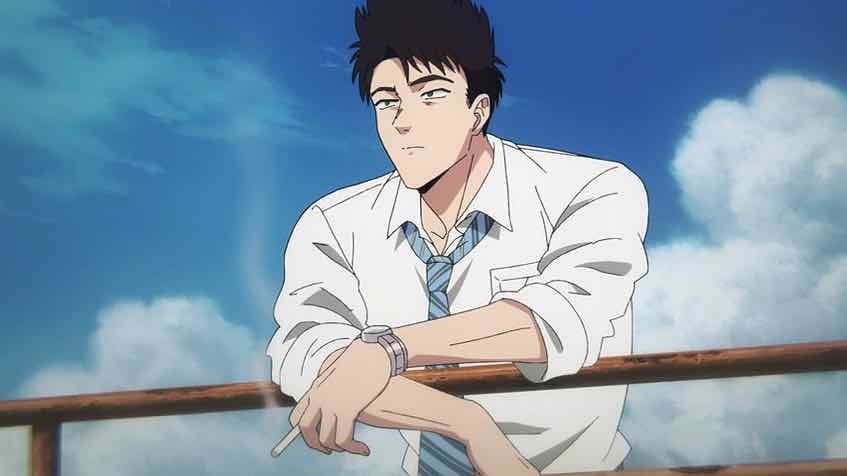
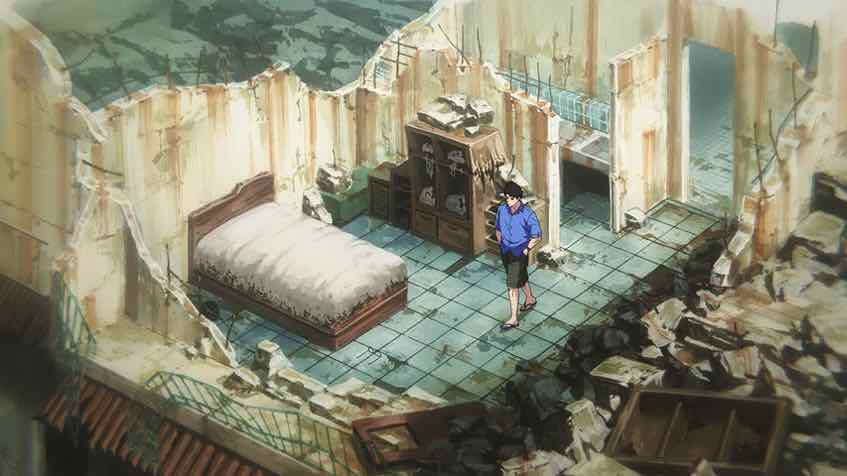
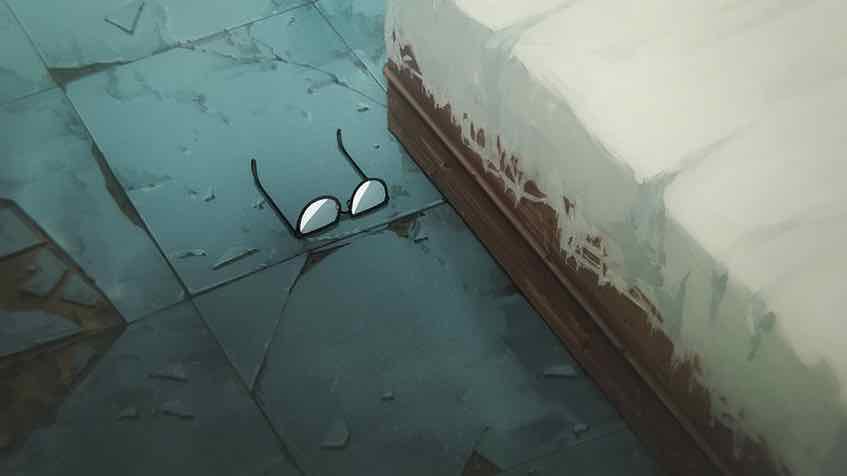


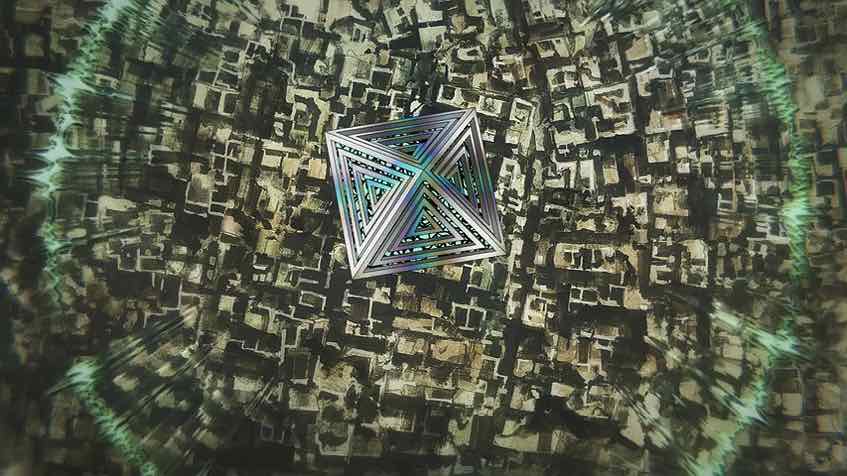
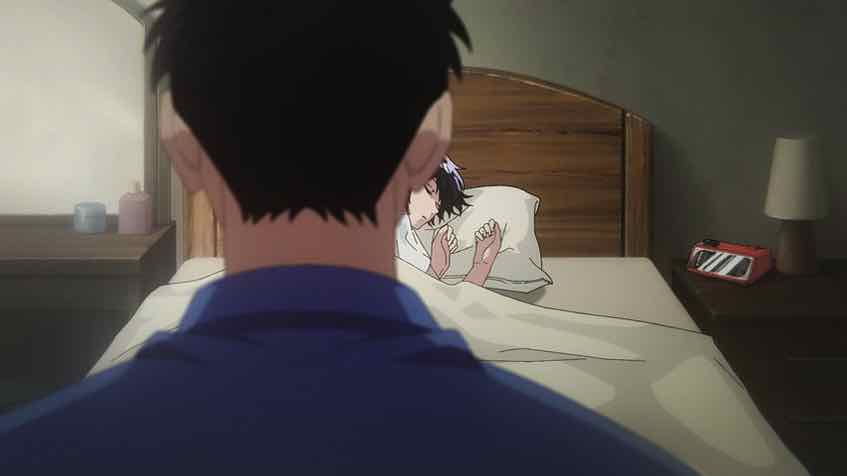
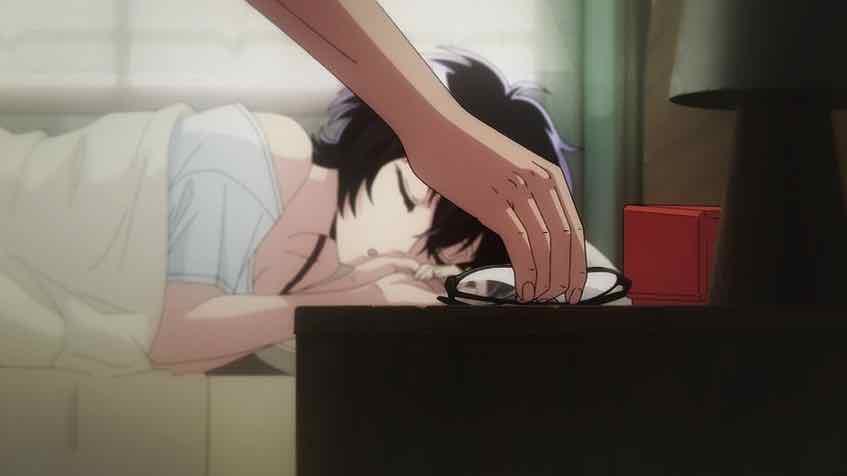
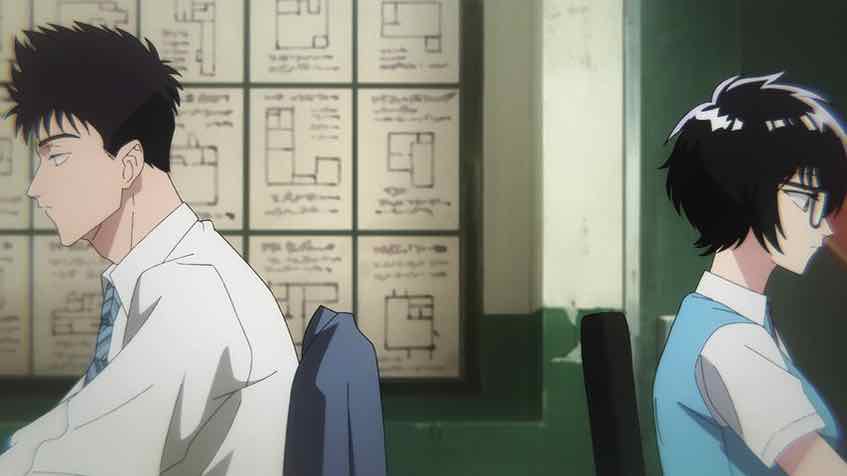

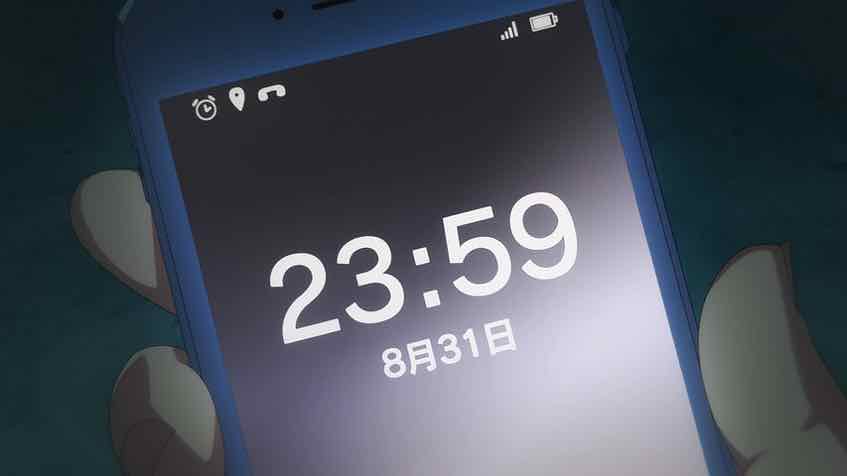
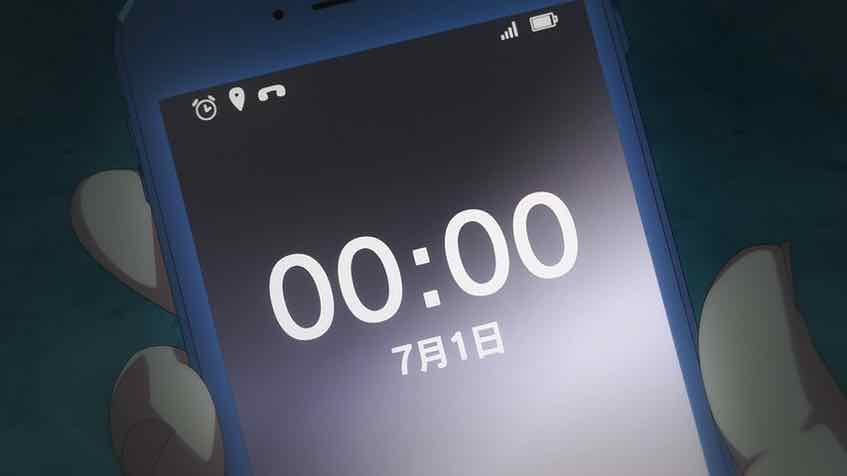
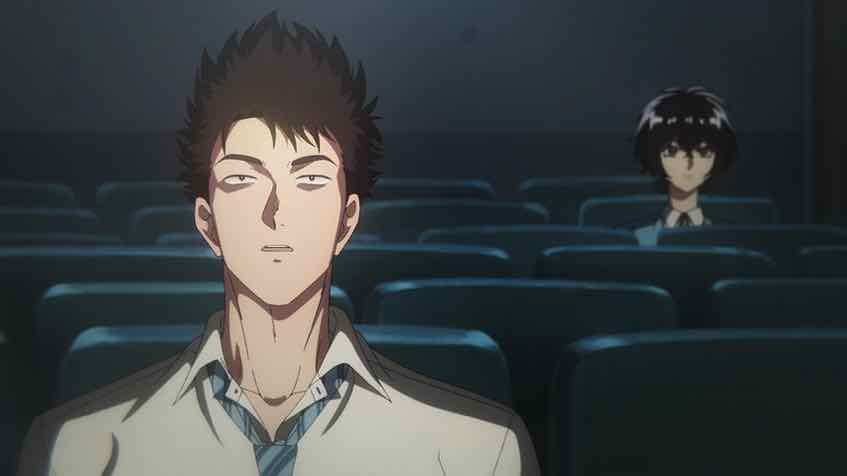


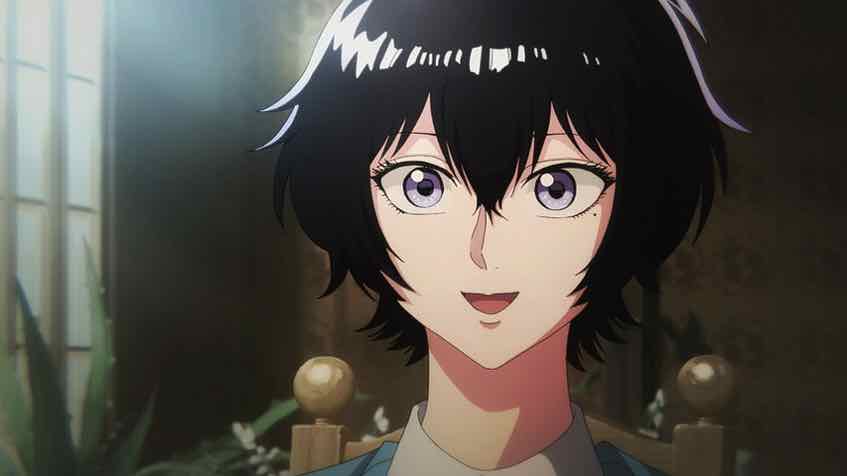
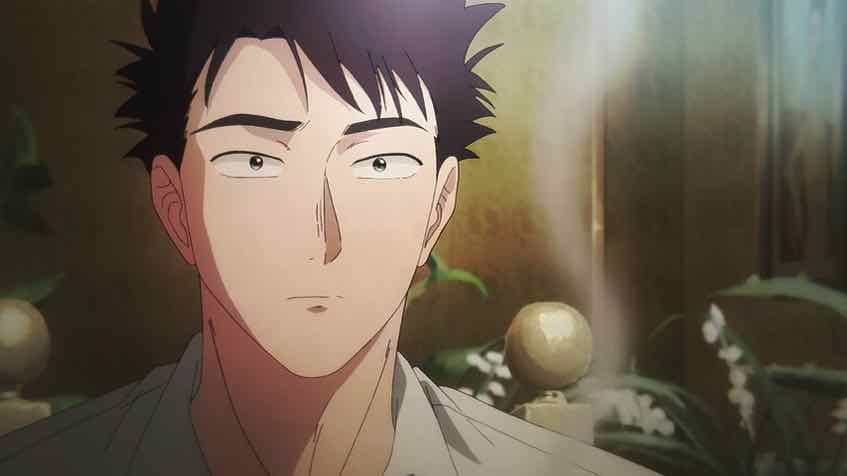
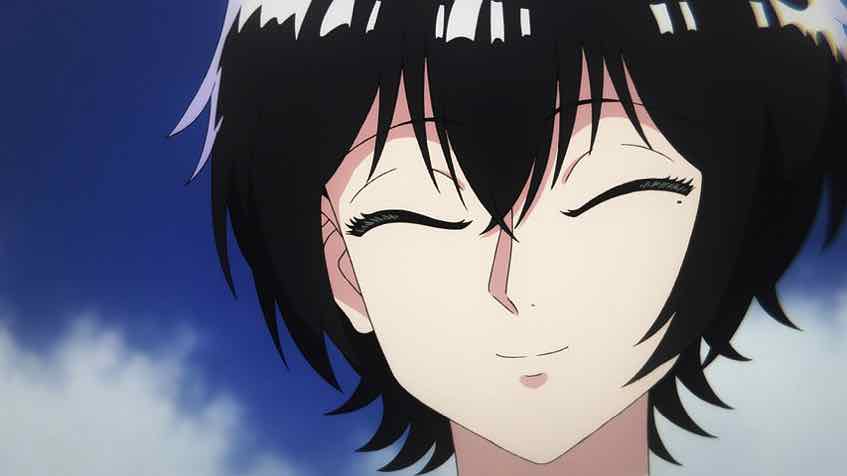
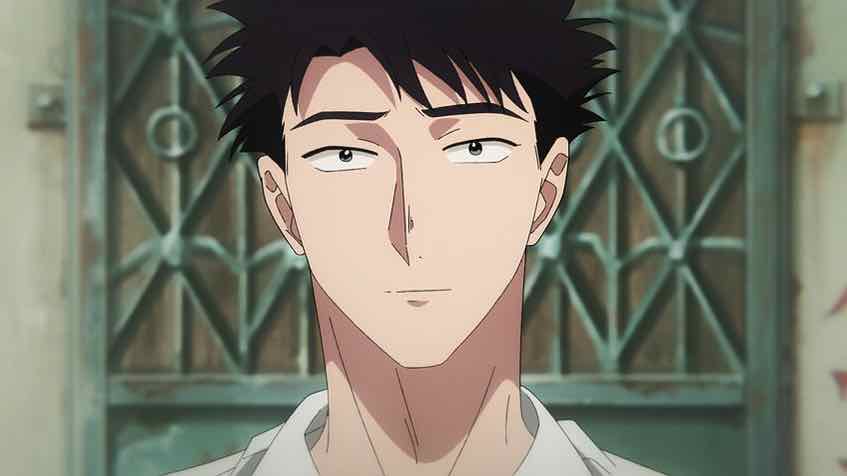
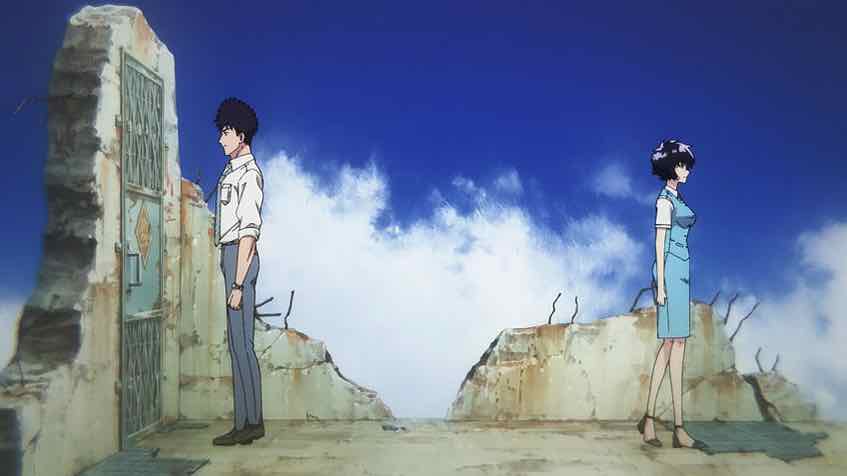
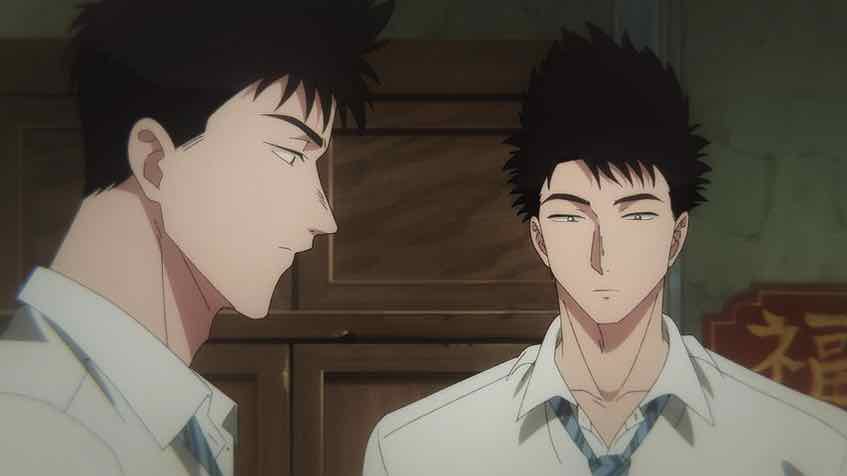



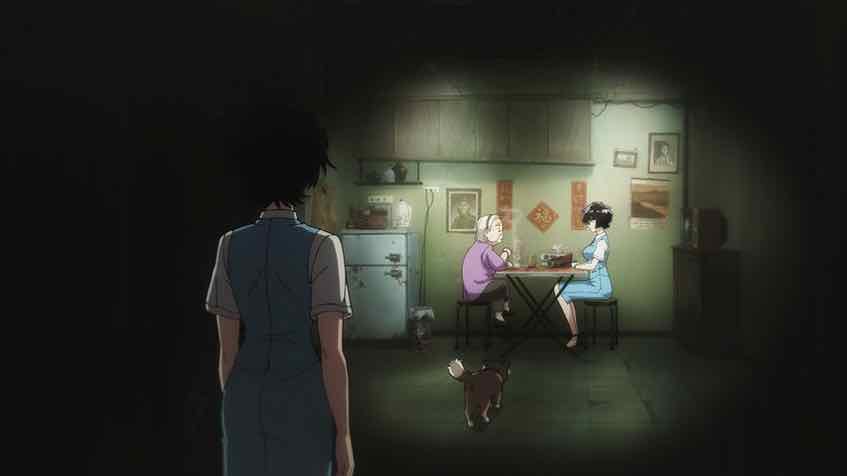
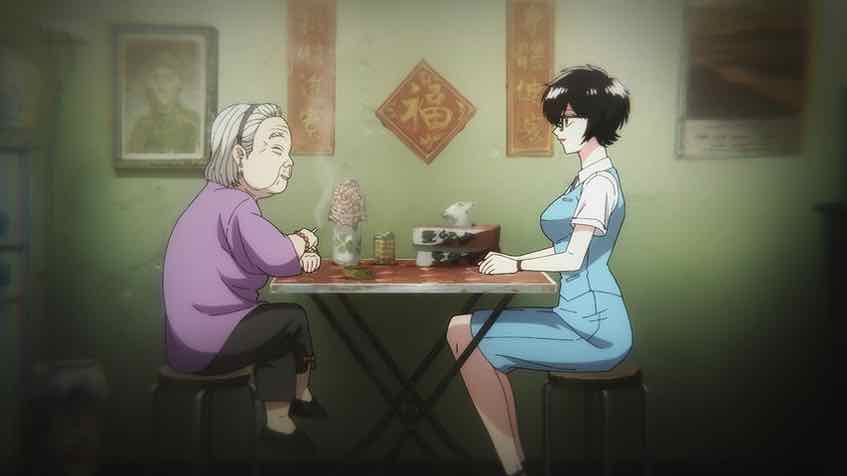

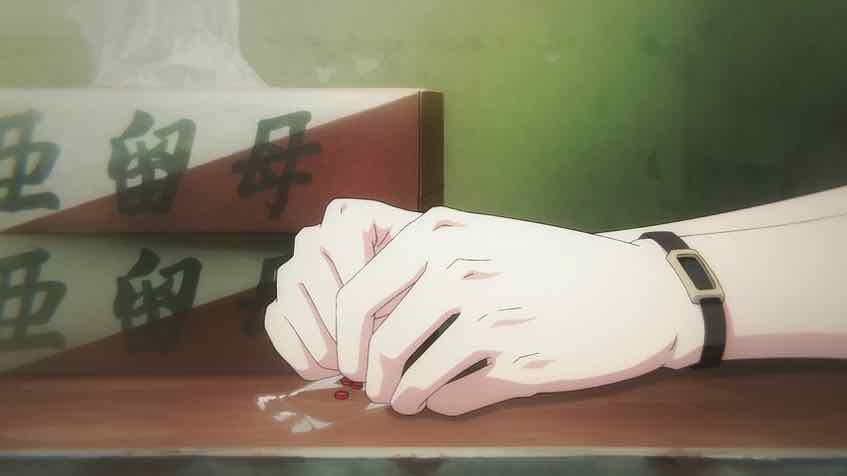
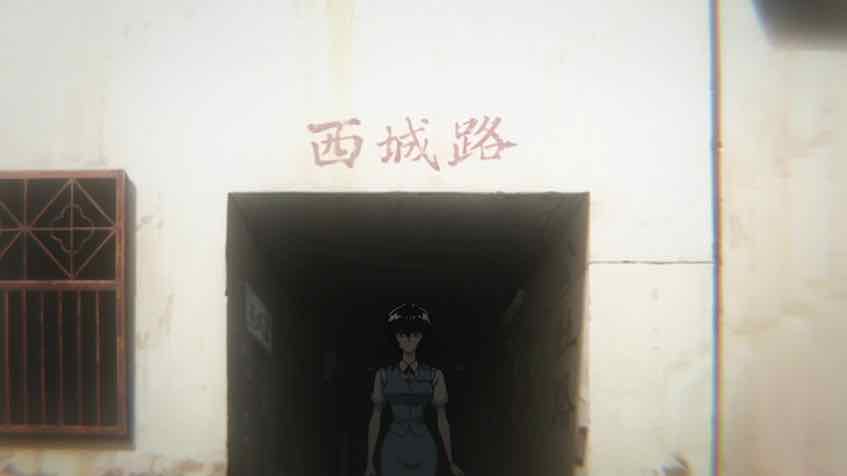
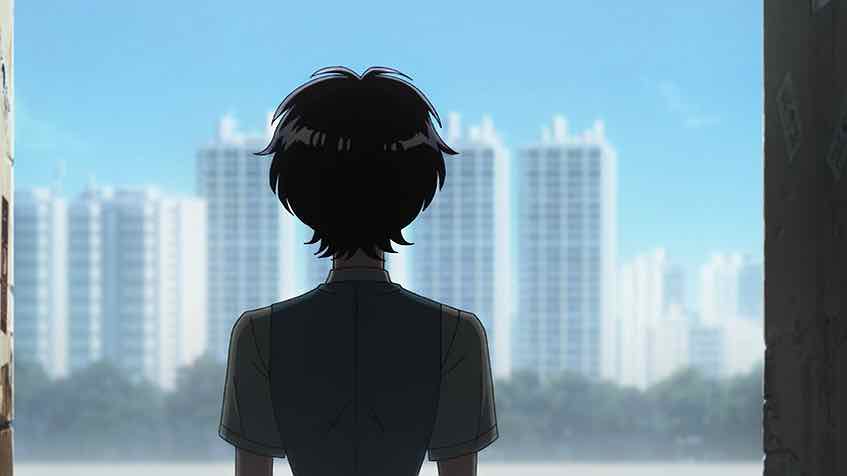
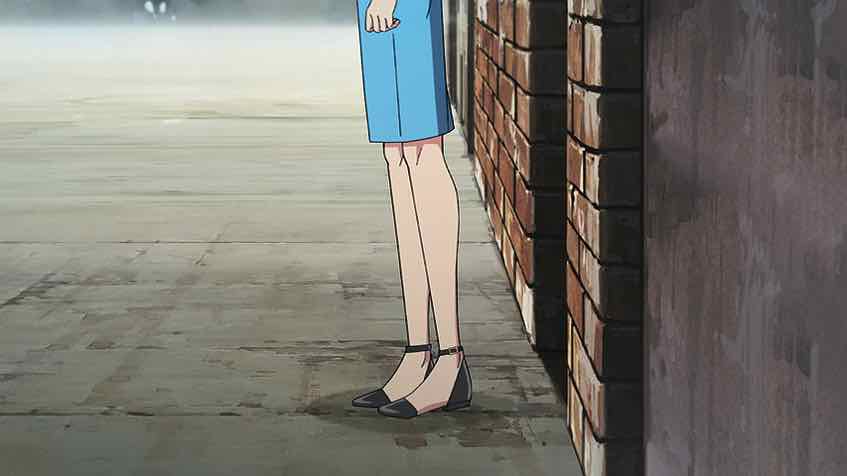
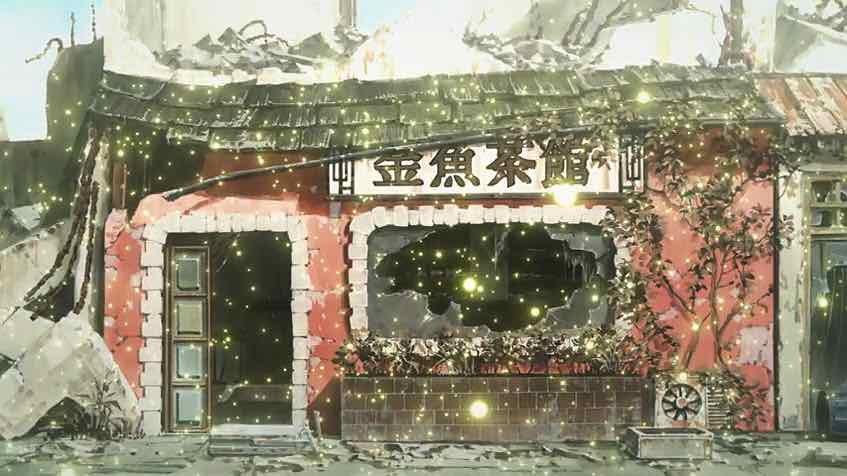

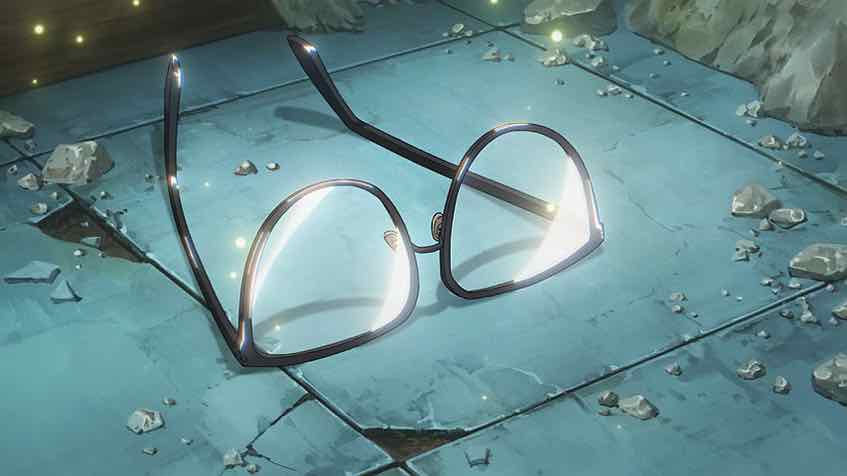

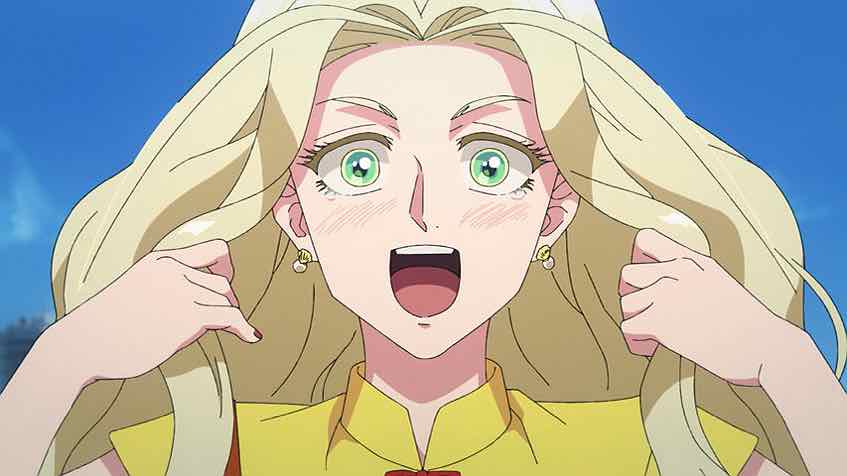


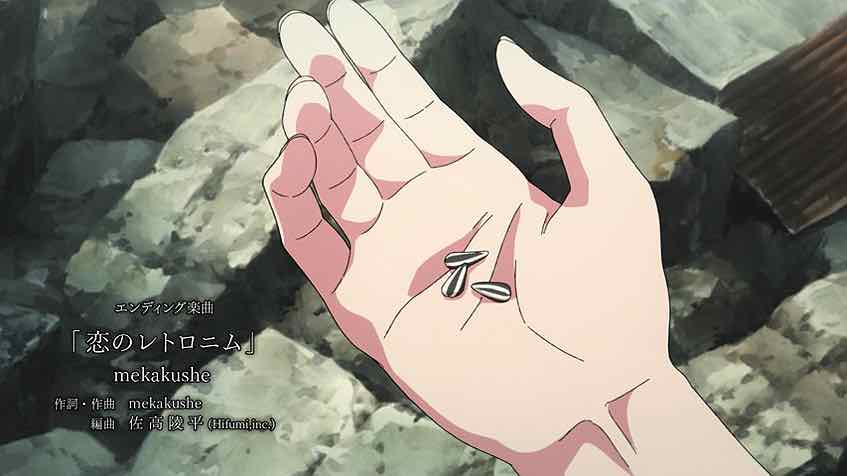
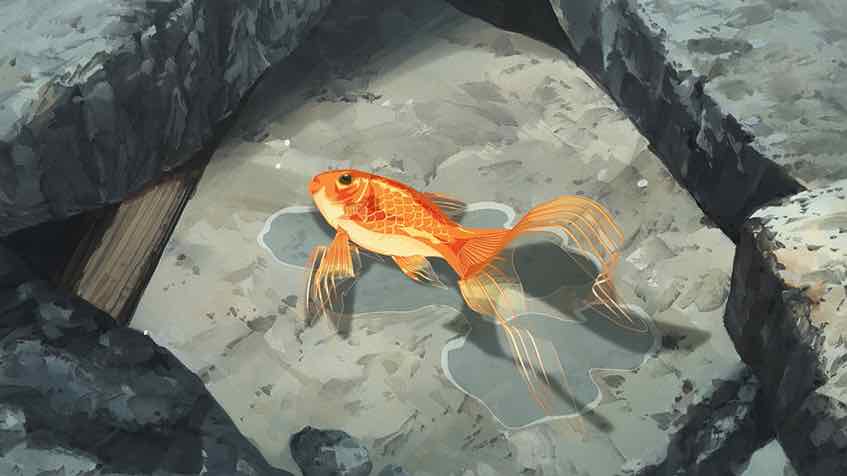

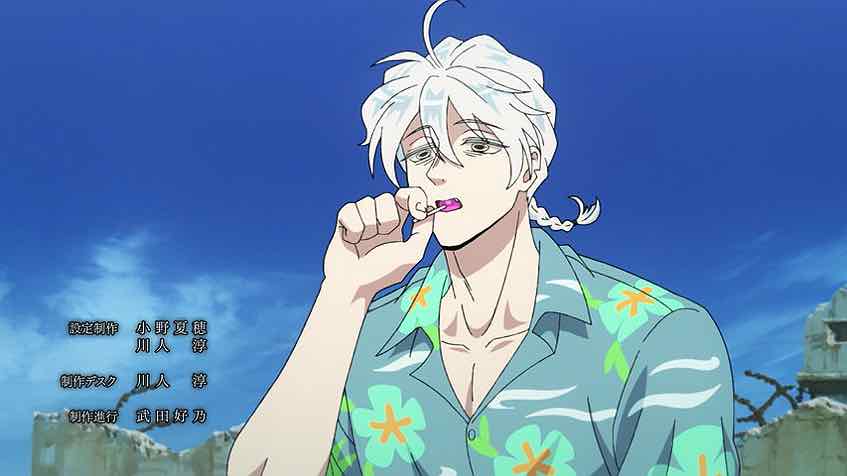
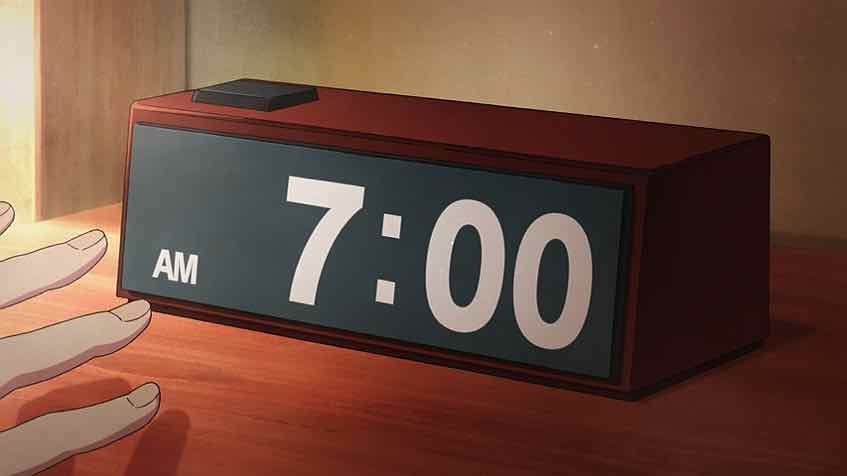

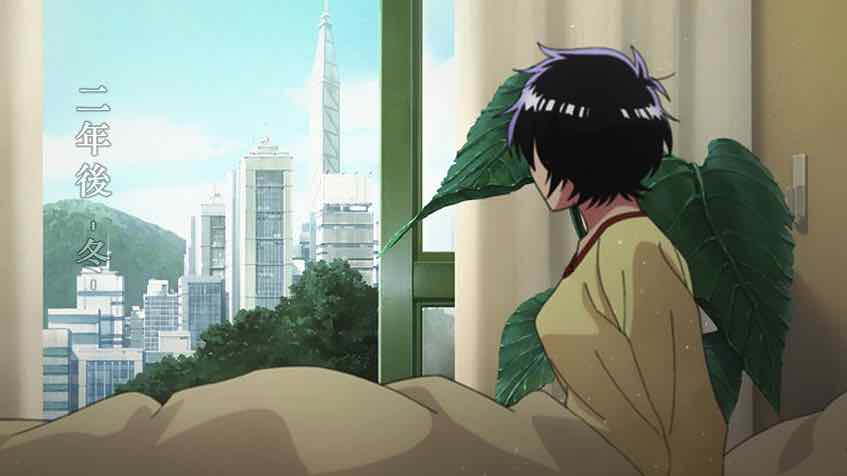
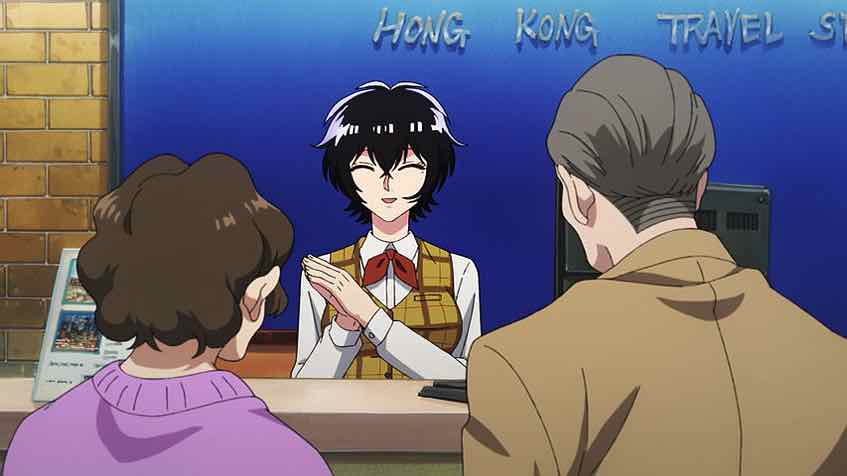
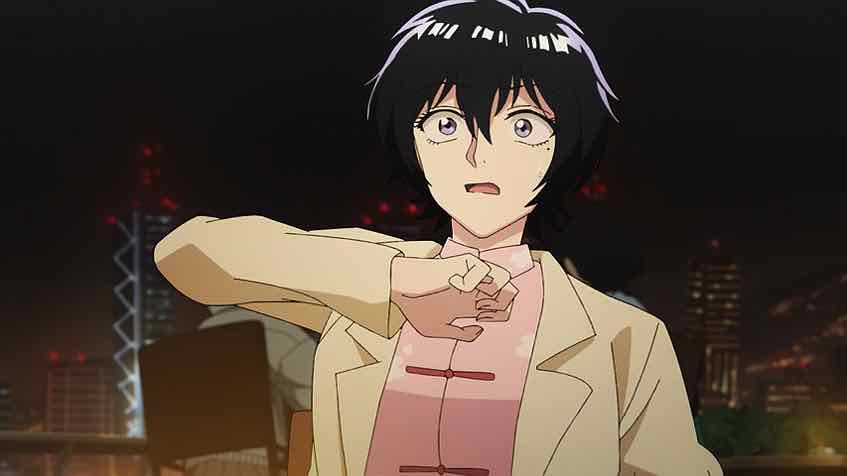
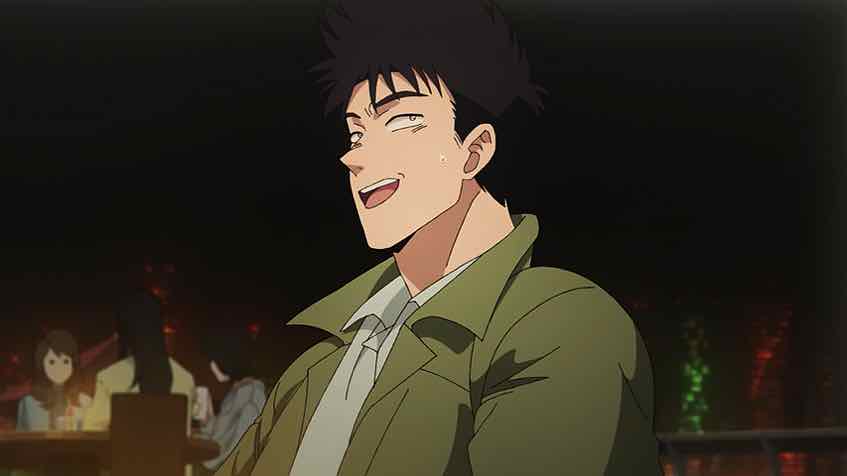

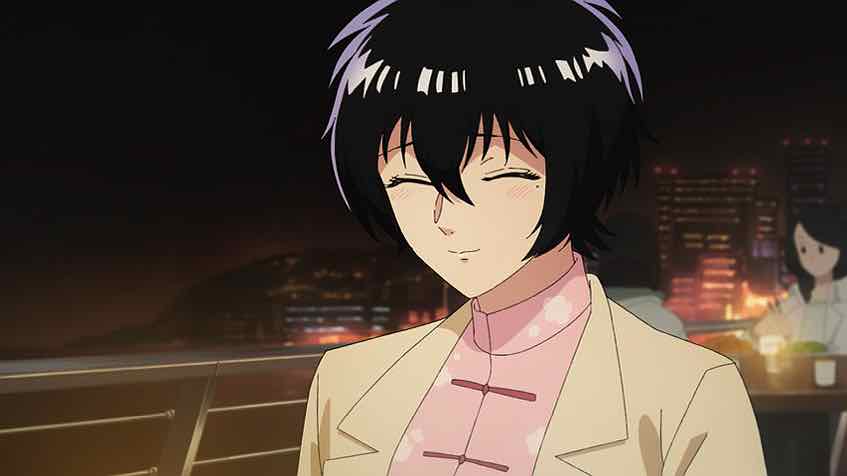
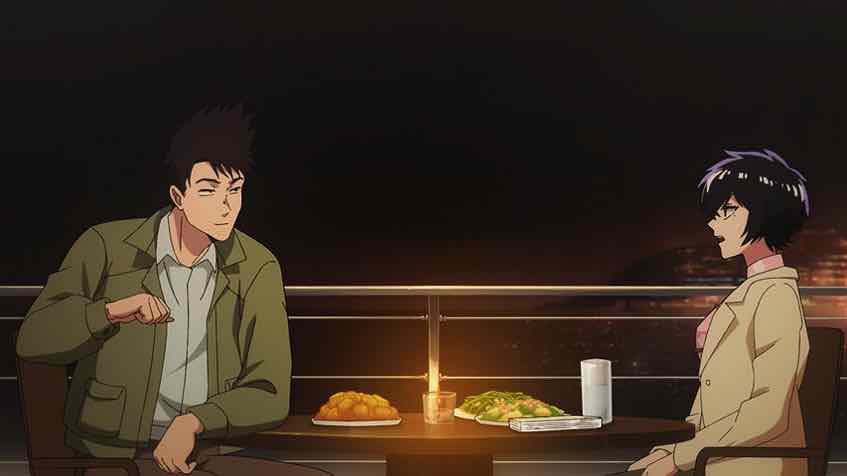


Lili
June 29, 2025 at 9:15 pmWell, this started off as a very lean but potentially decent adaptation (ep1), then turned bad very quickly (ep 2-10) and then became a terrible train wreck (ep11-13).
I just really hope you, and other anime watchers, give Jun Mayuzuki her due and pick up the manga. All the things you were left confused by are answered there.
Nadavu
June 30, 2025 at 12:07 amI can only judge the anime as a stand-alone work, having not read the manga, so I’ll say this: There wasn’t enough story time to spread across 7 major characters. Cut off Miyuki, Yuulong and possibly Gwen, and you can do the rest justice while allowing the city to shine more (I actually feel there wasn’t enough Kowloon throughout).
Success becoming Reiko’s Spirit Animal was, well, too silly for my taste.
Final petty criticism: The ruins of Kowloon do not look anything like a demolision site. It looks like a war zone, with random damage dealt to largely still-standing buildings.
Final thoughts: While mostly a fun ride, the show never really hit the heights I had hoped for. What it leaves me with, mostly, is a (strangely fitting) sense of loss and a craving for street-grade lemon chicken
Simone
July 5, 2025 at 11:15 pmThematically the entirety of the Hebinuma subplot seemed completely pointless. Maybe it ties in better in the manga but here it felt like almost completely wasted time. Definitely would have rather seen more time on Kujirai and Kudo, who are the much more emotional resonant core of the story for me. The Hebinuma stuff seems like it theoretically should explain more about how Generic Terra came to be, but it doesn’t really do that.
catterbu
June 30, 2025 at 5:08 amThis was an interesting an experience for me. I started reading the manga when the anime started, but very slowly (I am through two volumes now). So I experienced everything first in the anime but have been seeing what it missed in the manga.
My take: the manga is undoubtedly better (especially if you are like me and just love hanging out with interesting characters as an interesting story slowly unfolds). That written, the anime is undoubtedly good. It could have gone so much worse, but managed to hang together. Did it have way too many expository scenes? Yes. Was I sad about getting less time with many off the characters toward the end? Yes. But it was still damn good and one need not look far to find a litany of examples of inconsistent production values and/or completely misunderstanding the source material.
I look forward to reading the manga’s conclusion and do not regret getting this adaptation for a moment. Even if I it was at least three cours…
Yann
June 30, 2025 at 10:22 amThe ultimate “organized crime” is what we’ve been brainwashed into thinking as “government” through compulsory public education and other methods of mind control, like mass media, religion, money… Just to name a few. What the actual facts hint at (explosive growth, the residents’ love” for the place, etc) is that this true embodiment of anarchism was a resounding success that “governments” couldn’t leave alone.
Of course they’ll say they had to destroyed it for safety reasons. When governments take people’s freedom away, it’s always to “protect” us from ourself…
If you dig deeper, and read between the lines of the official narrative, it’s easy to understand that governments can’t let examples like Kowloon prosper. It makes it too obvious that they’re not as indispensable as they need us to believe in order for us to voluntarily accept our own enslavement.
ruicarlov
July 3, 2025 at 8:20 amSo this was a completely original ending? Fooled me. I thought it was a completed manga, not ongoing (I didn’t do any research). Everything was barreling towards a conclusion, one way or another, and I tought it was simply a matter of compressing, not altering. It ended up being quite a good story for me. And while many things were left up in the air, I think the landing was good.
Guardian Enzo
July 3, 2025 at 8:37 amI agree, and I suspect the manga ending (soon) will largely align structurally (albeit with a lot more detail).
KatsukiYukie
July 5, 2025 at 5:31 amI was expecting a similar ending to Koi wa Ameagari no You ni’s adaptation, but this honestly fell kinda flat for me. It’s an ending like what I’d expect from most anime original endings…lots of dream-like/illusory sequences, forced happy ending, and plot points that aren’t answered. Still, it didn’t fall as hard as most series do in this episode, and there was still a good amount of poignancy. Plus like its predecessor, the rest of the series has gotten me interested in picking-up the source material, so I guess it’s accomplished its task.
I enjoyed After the Rain in manga form, so I do have some hope the actual ending of this manga will make a little more sense xD I feel like Kujirai B’s story is probably still missing (red pills felt a little Matrix-inspired)…if not, quite tragic for Kudo to have fallen in love with such a weirdo…